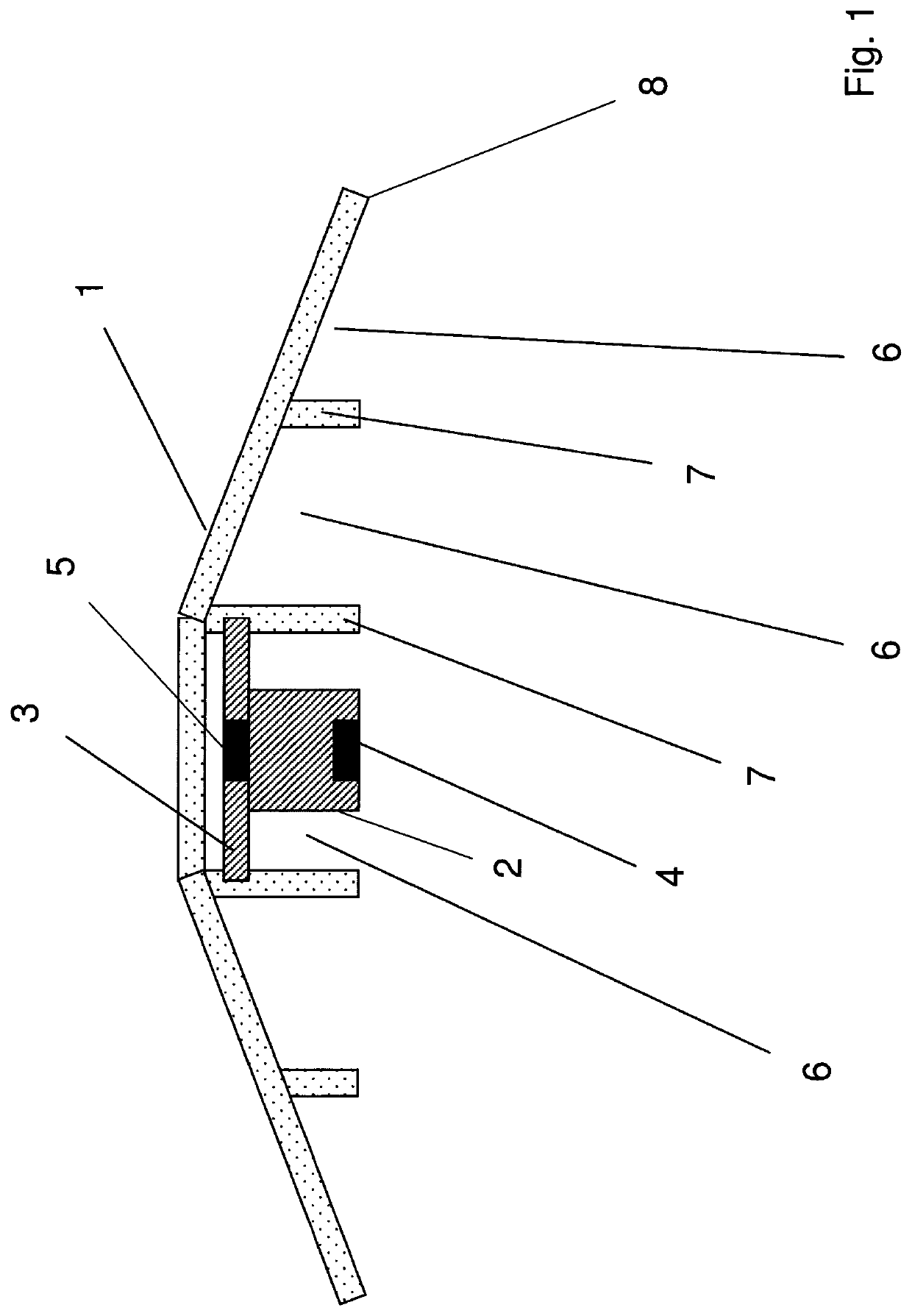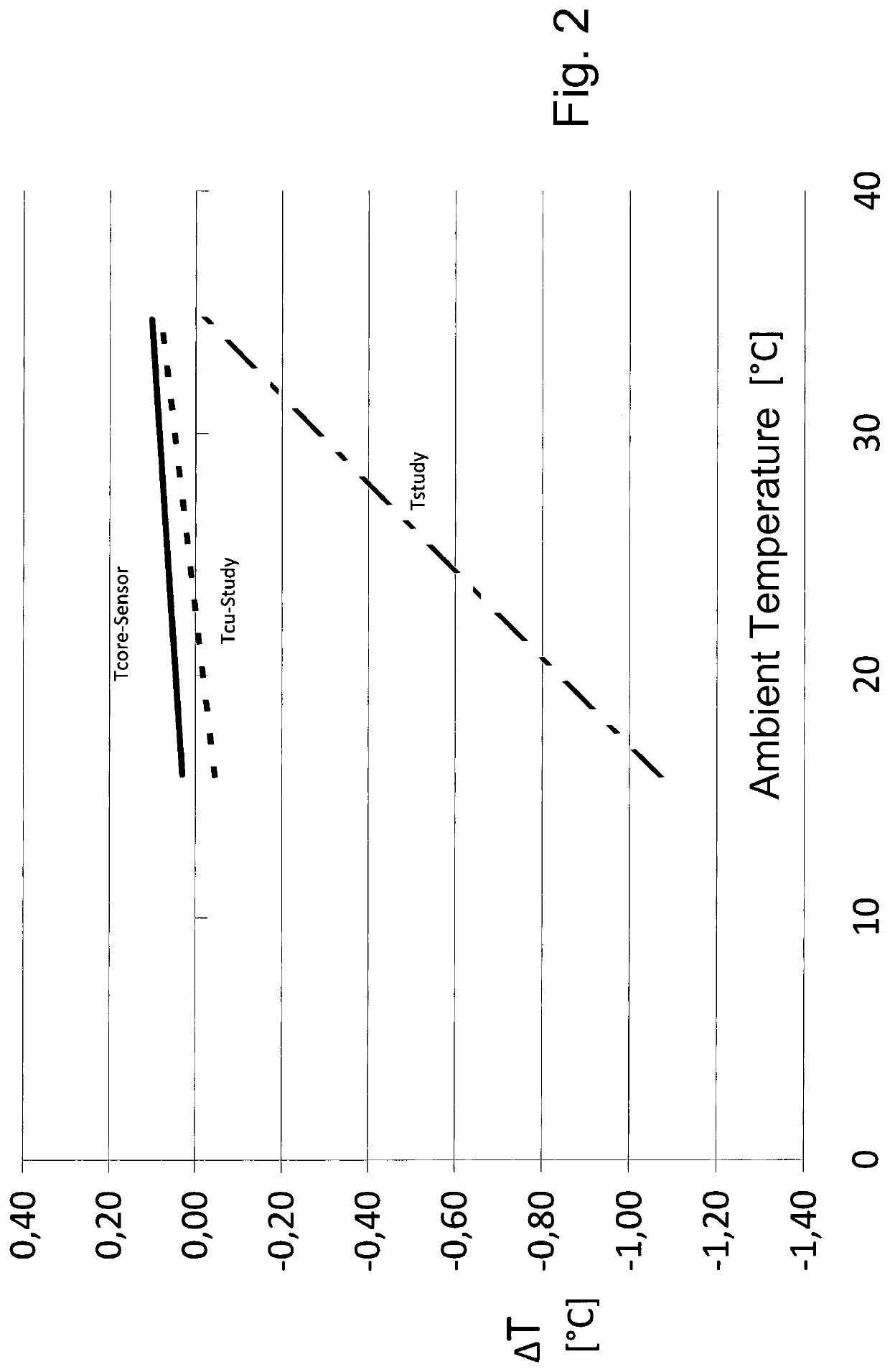Body core temperature sensor
a temperature sensor and body technology, applied in the field of dual temperature sensors, can solve the problem of causing a measurement error that is still absolutely negligibl
- Summary
- Abstract
- Description
- Claims
- Application Information
AI Technical Summary
Benefits of technology
Problems solved by technology
Method used
Image
Examples
Embodiment Construction
[0020]The dual temperature sensor shown in FIG. 1 has a sensor block 2, which carries a first temperature sensor 4 on a side facing the skin surface and a second temperature sensor 5 at the opposite end facing away from the skin. The sensor block 2 is shielded in a hemisphere by a hood-shaped housing shell 1. The housing shell 1 is shaped such that an outer peripheral edge 8 of the hood-shaped housing shell 1 lies in a same plane as the lower edge surface first temperature sensor 4, so that the housing shell forms a closed, air-filled cavity 6 around the sensor block 2 when the dual temperature sensor is in contact with the skin surface. One or more webs 7, originating from the inner wall of the housing shell, which impart a greater rigidity to the housing shell, may be provided in the interior of the housing shell 1. A height of the webs 7 may be dimensioned such that lower edges of the webs 7 likewise lie in the plane defined by the outer peripheral edge 8 of the housing shell and...
PUM
| Property | Measurement | Unit |
|---|---|---|
| path length | aaaaa | aaaaa |
| diameter | aaaaa | aaaaa |
| diameter | aaaaa | aaaaa |
Abstract
Description
Claims
Application Information
 Login to View More
Login to View More - R&D
- Intellectual Property
- Life Sciences
- Materials
- Tech Scout
- Unparalleled Data Quality
- Higher Quality Content
- 60% Fewer Hallucinations
Browse by: Latest US Patents, China's latest patents, Technical Efficacy Thesaurus, Application Domain, Technology Topic, Popular Technical Reports.
© 2025 PatSnap. All rights reserved.Legal|Privacy policy|Modern Slavery Act Transparency Statement|Sitemap|About US| Contact US: help@patsnap.com


